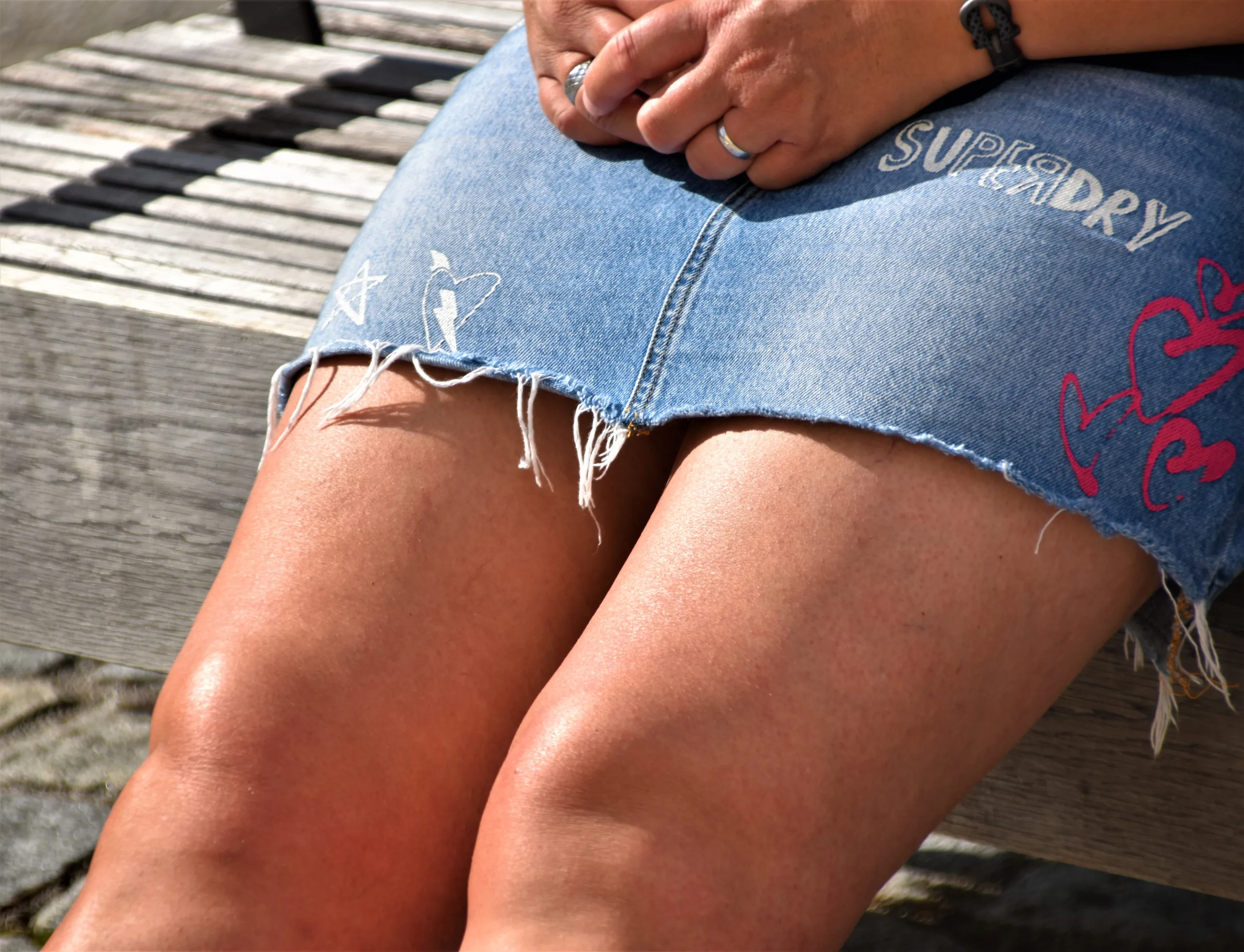As an avid athlete and fitness enthusiast, I’ve always been amazed by the immense power and potential of our leg muscles. They’re like the engines that drive us forward, allowing us to run, jump, and lift with ease.
But what sets apart those who excel in leg performance from others? In this article, I’ll uncover the secrets of leg muscles for maximum performance. We’ll explore how genetics and lifestyle choices influence leg muscle development, understand the role of muscle fibers, and discover effective exercises to unleash their full potential.
Get ready to take your athleticism to new heights!
Key Takeaways
- Leg muscle length is determined by genetics, with women tending to have slightly longer legs than men.
- Leg muscles primarily consist of slow-twitch fibers, providing endurance rather than speed.
- Neglecting leg strength training can lead to weaker muscles and accumulation of fat in the legs.
- Strengthening leg muscles improves overall physical performance, balance, stability, and reduces the risk of injuries.
The Role of Genetics in Leg Muscle Development
Analyzing the role of genetics, it’s fascinating to see how our genes play a significant part in the development of leg muscles.
Our genetic makeup determines various factors, including the impact of nutrition on leg muscle development and the role of age in leg muscle development.
Research suggests that certain genes influence the efficiency of nutrient absorption and utilization by leg muscles. This means that even with a proper diet, individuals with specific genetic variations may have different outcomes in terms of leg muscle development.
Additionally, as we age, there’s a natural decline in muscle mass and strength, known as sarcopenia. Genetics can influence the rate at which this decline occurs.
Understanding the role of genetics in leg muscle development can help individuals tailor their nutrition and exercise routines to optimize muscle growth and maintain strength as they age.
Understanding the Different Types of Leg Muscle Fibers
While analyzing leg muscle fibers, I’ve come to understand the different types and their impact on performance. The composition of leg muscle fibers can vary depending on factors such as age and training. As we age, there’s a natural decline in the proportion of fast-twitch fibers, which are responsible for explosive movements. This can result in a decrease in leg muscle strength and power. On the other hand, slow-twitch fibers, responsible for endurance, are relatively preserved with age.
The relationship between leg muscle strength and athletic performance is well-established. Strong leg muscles are essential for activities such as running, jumping, and changing direction quickly. They provide the necessary power and stability for optimal performance. Additionally, strong leg muscles can help prevent injuries by absorbing and dissipating forces during high-impact movements.
Therefore, it’s important to incorporate exercises that target both slow-twitch and fast-twitch muscle fibers to maintain overall leg muscle health and maximize athletic performance.
How Body Composition Affects Leg Muscle Performance
I’ve discovered that body composition plays a crucial role in determining the performance of leg muscles. One key factor that affects leg muscle performance is nutrition. Proper nutrition, specifically a balanced diet with adequate protein and essential nutrients, is essential for muscle growth, repair, and overall performance. Without proper nutrition, leg muscles may not have the necessary fuel and building blocks for optimal function.
Additionally, age also plays a role in leg muscle development. As we age, there’s a natural decline in muscle mass and strength, known as sarcopenia. This decline in leg muscle performance can be mitigated through regular exercise, particularly resistance training, which helps maintain and build muscle mass. Adequate protein intake becomes even more important as we age to support muscle recovery and prevent muscle loss.
The Benefits of Strengthening Leg Muscles
How can strengthening leg muscles improve overall physical performance?
Strengthening leg muscles offers numerous benefits that go beyond just having strong and toned legs.
One important aspect is the impact of age on leg muscle strength. As we age, we naturally experience a decline in muscle mass and strength. By engaging in regular leg exercises, we can counteract this decline and maintain strong leg muscles, which are essential for activities like walking, climbing stairs, and maintaining balance.
Additionally, there’s a strong connection between leg muscle strength and overall health. Strong leg muscles not only support the body’s weight and engage other major muscles, but they also contribute to better balance, stability, and mobility.
Furthermore, leg exercises can enhance athletic performance and reduce the risk of injuries, making them a crucial component of any fitness routine.
Targeted Exercises for Stronger Leg Muscles
To maximize leg muscle strength and performance, I recommend incorporating targeted exercises that focus on both the quadriceps and hamstrings. Effective leg muscle exercises for injury prevention include squats, lunges, step-ups, and single-leg deadlifts. These compound exercises engage multiple leg muscles, improving balance and stability while also promoting muscle growth.
Plyometric exercises like jump squats and box jumps can enhance power and explosiveness in the legs. Resistance training with weights or resistance bands can increase muscle strength, while incorporating cardio exercises like running or cycling can improve leg endurance.
In addition to targeted exercises, the role of nutrition in optimizing leg muscle performance shouldn’t be overlooked. Consuming a balanced diet rich in protein, carbohydrates, and essential nutrients can provide the fuel necessary for muscle growth and repair.
Enhancing Balance and Stability Through Leg Workouts
Improving balance and stability is essential for optimal performance in leg workouts. To enhance these aspects, there are specific strategies that can be incorporated into leg exercises. Here are some ways to improve balance and stability through leg workouts:
- Improving proprioception through leg exercises:
- Incorporating single-leg exercises like single-leg squats or single-leg balance exercises can challenge the body’s ability to balance and improve proprioception.
- Performing exercises on unstable surfaces, such as a Bosu ball or balance board, can further enhance proprioception and stability.
- Utilizing dynamic movements, such as lateral lunges or lateral hops, can challenge the body’s ability to stabilize in different planes of motion.
- The role of core strength in balance and stability during leg workouts:
- Strengthening the core through exercises like planks, Russian twists, or medicine ball rotations can improve stability and balance during leg exercises.
- Engaging the core during leg exercises, such as squats or lunges, can help maintain proper alignment and stability.
- Incorporating exercises that specifically target the core, such as stability ball rollouts or cable woodchops, can improve overall balance and stability.
Power and Explosiveness: Plyometric Leg Exercises
Jumping exercises like plyometric squats and box jumps are excellent for developing power and explosiveness in the legs. Plyometric leg exercises involve quick, explosive movements that help improve speed and agility. These exercises activate the fast-twitch muscle fibers in the legs, which are responsible for generating maximum force in minimal time.
By incorporating plyometric exercises into your leg workout routine, you can enhance your athletic performance and increase your speed and power. Additionally, these exercises can help prevent muscle atrophy in the legs, as they require the muscles to work against resistance and generate force.
Plyometric leg exercises, when performed correctly and with proper form, can be an effective way to strengthen and condition your leg muscles for optimal performance.
Building Strength With Resistance Training for Legs
One way I’ve found to build strength in my legs is by incorporating resistance training exercises into my workout routine. Resistance training can be done with weights or resistance bands, and it helps to activate and strengthen the leg muscles.
Here are three effective leg muscle activation techniques using resistance bands:
- Resistance band squats: Place the resistance band around your thighs, just above your knees. Stand with your feet shoulder-width apart and squat down, keeping tension on the band throughout the movement. This exercise targets the quads, hamstrings, and glutes.
- Resistance band lateral walks: Step into a resistance band and place it around your ankles. Take small steps sideways, maintaining tension on the band. This exercise targets the glutes, outer thighs, and hip abductors.
- Resistance band hamstring curls: Lie on your stomach with the resistance band wrapped around your ankles. Keep your hips and upper body on the ground and bend your knees, pulling your heels towards your glutes. This exercise targets the hamstrings.
Incorporating these resistance band workouts into your leg training routine can help to activate and strengthen the leg muscles, leading to improved strength and performance.
Improving Endurance With Cardiovascular Leg Exercises
My favorite way to improve endurance in my legs is by incorporating cardiovascular exercises into my workout routine. Cardiovascular exercises, such as swimming, can have a significant impact on leg muscle endurance.
As we age, our leg muscles naturally experience a decline in endurance due to factors like decreased muscle mass and a decrease in the number of slow-twitch muscle fibers. However, engaging in regular cardiovascular exercise, such as swimming, can help counteract these effects.
Swimming is a low-impact exercise that provides resistance, which helps to strengthen and tone the leg muscles. It also improves cardiovascular fitness, allowing the muscles to work more efficiently and for longer durations.
Additionally, swimming engages multiple muscle groups in the legs, including the quadriceps, hamstrings, and calves, leading to overall improved endurance and performance.
Frequently Asked Questions
What Are Some Common Lifestyle Choices That Can Affect Leg Muscle Development?
A sedentary lifestyle and poor nutrition can greatly impact leg muscle development. Lack of exercise and unhealthy eating habits can lead to muscle weakness and hinder growth potential.
How Does the Composition of Leg Muscles Differ Between Elite Marathoners and Non-Athletes?
Elite marathoners have a unique leg muscle composition compared to non-athletes. They tend to have a higher percentage of slow-twitch fibers in their quadriceps, which provide endurance for long-distance running.
What Are Some Factors That Can Contribute to the Accumulation of Fat in the Legs?
Factors and causes that contribute to the accumulation of fat in the legs include genetics, hormone levels, and lifestyle choices such as diet and exercise. These factors can influence where and how fat is stored in the body.
Can Leg Exercises Help Reduce the Appearance of Cellulite in the Legs?
Yes, leg exercises can help reduce the appearance of cellulite in the legs. By strengthening leg muscles and decreasing fat accumulation, cellulite can be minimized. Incorporating cardio and resistance training is key for overall body composition.
How Do Leg Muscles Contribute to Overall Physical Performance Beyond Just Leg Strength?
Leg muscle activation plays a crucial role in overall physical performance. Endurance in leg muscles directly impacts activities like running, jumping, and maintaining balance. Strong leg muscles enhance performance and reduce the risk of injuries.

